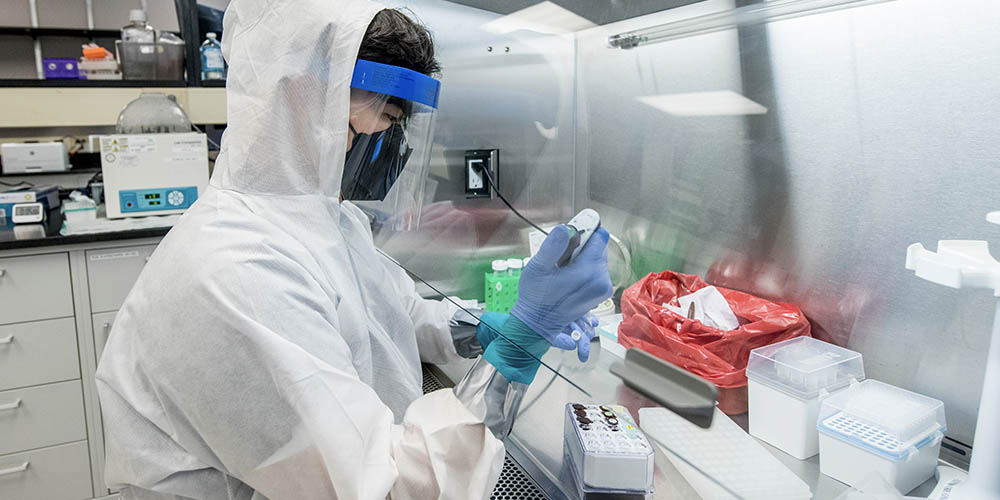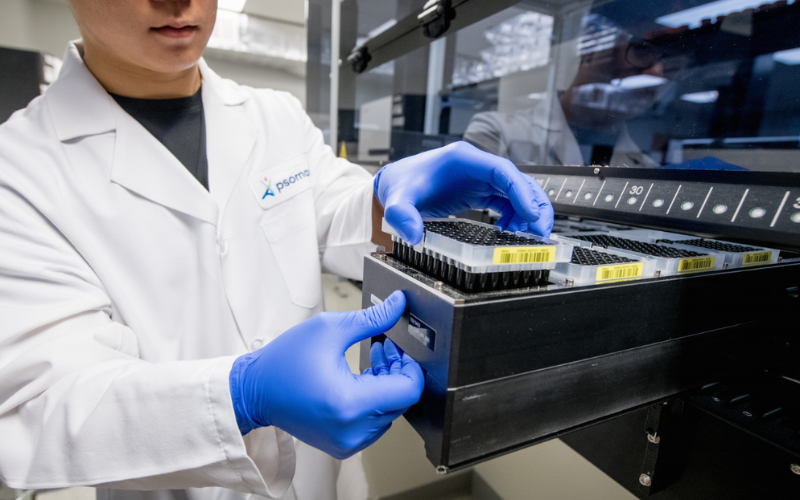Introduction
The need for accurate and rapid identification of infectious agents in individual illness and global health threats cannot be overstated. Limitations in the timeliness and accuracy of pathogen identification have devastating public health consequences. The current methods that are routinely used often provide data in a time span that does not allow the most effective, specific, and direct treatment options. This leads to antibiotic treatments that are broad, based on symptoms, or based on an unconfirmed tentative diagnosis. This approach increases the risk of antibiotic resistance at the single patient and public levels.
Medical microbiology is moving in the direction of molecular diagnostic approaches that will address the limitations of current infectious disease diagnostic methods. Next-generation sequencing (NGS) has the potential for use as an excellent diagnostic tool for infectious diseases. This includes use for individual patient, public health, and disease surveillance settings. The use of NGS for infectious disease diagnosis can bolster accurate and rapid identification of pathogens so that the most appropriate and effective treatment can be applied with crucial timeliness and lower cost.
Traditional Approaches to Infectious Disease Diagnosis and Surveillance
The standard long-time approach of culture and antibiotic sensitivity testing is still in use. However, it assumes that a disease is caused by a microorganism that can be cultured. Those pathogens that are not culturable would not be identified and proper diagnosis would fail. Also, errors in the identification of pathogens are not uncommon, and the time to results can take days or more. This increases the risk of life-threatening progression and spread of disease.
Enzyme immunoassays detect pathogen-related proteins using antibodies. This approach provides faster results, but there are still issues with variations in the sensitivity of the testing. Also, diagnoses can be missed depending on the timing of testing in relation to the start of symptoms. Real-time PCR is also routinely used in clinical microbiology laboratories. It has proven to provide rapid and early pathogen detection. Given its sensitivity, however, false positives are not uncommon due to the amplification of DNA of microorganisms that are not actually the cause of disease in a given person or population. False negatives also occur for a number of reasons, including the presence of PCR inhibitors in specimens.
Pulsed-field gel electrophoresis generates very specific genomic DNA patterns for different microorganisms and strains. The time-consuming aspect is a drawback, as well as issues with complicated sample preparation. Multilocus sequence typing (MLST) relies on DNA sequence analysis of nucleotide polymorphisms (variant forms of DNA sequences at a locus) in housekeeping genes. Although MLST has proven to be highly unambiguous and portable, it can often fail to distinguish between strains, making its use in epidemiological surveillance limited.
Advantages of Genomic Approach to Infectious Disease Diagnosis
With the use of NGS, there is no need for time-consuming culture steps because analyses can detect microorganisms directly from the samples, including blood and cerebrospinal fluid (CSF). It has shown advantages over conventional genotyping approaches for investigating epidemics1,2. Since genomic sequencing information can be obtained in a few days, pathogen identification can be achieved in the early stages of a disease outbreak.
Further, NGS can identify unculturable pathogens that would be missed in routine culture and sensitivity assays. Recent advances in the use of NGS show that it can distinguish between different pathogen strains, detect co-infections, and even uncover new pathogens. This benefit also includes the discovery of emerging disease-causing viruses.
Whole-genome sequencing (WGS) data obtained via NGS has uncovered new sequence information that has been used successfully to detect drug resistance determinants. Examples include the detection of mecC in S. aureus3 and ampC in E. coli. In addition to detecting emerging drug-resistant microorganisms, the application of WGS helped uncover mutations and other genetic factors associated with the spread of drug-resistant pathogens4.
Examples of NGS-Based Clinical Microbiology
Variants of HIV that are resistant to antiretroviral therapy exist. These are not readily detectable by conventional genotyping assays due to the limited sensitivity of these methods. Using MiSeq, Fisher et al. performed NGS and bioinformatic analyses to successfully detect multiple minor variant drug-resistance mutations in HIV-1 reverse transcriptase in infants where Prevention-of-Mother-to-Child-Transmission failed5.
Guan et al. screened CSF for viral DNA to diagnose the cause of central nervous system infection. Next-generation sequencing was performed in four cases of suspected viral meningoencephalitis. Herpes simplex virus (HSV) 1, HSV 2, or herpes virus type 3 were detected in the different patients. The results were confirmed with PCR6.
Results of clinical assays for leptospirosis were negative in a boy with severe immunodeficiency, seizures, and other neurological symptoms7. However, NGS of the CSF identified sequences consistent with leptospira infection (confirmed by the CDC via PCR). The boy was able to receive life-saving and targeted antibiotic treatment.
Conclusions
Next-generation sequencing has shown utility in the molecular detection and genotyping of infectious disease pathogens and for public health surveillance. With the use of NGS technology, pathogens can be isolated and researchers can detect pathogens directly from samples such as blood and CSF. Results are obtained rapidly with extreme accuracy, allowing better-informed treatment decisions. The sequence information obtained by NGS is also used to develop specific primers for PCR-based assays, to provide more complete sequence information for MLST assays, and to develop other specific field tests.
References
- Roetzer A, Diel R, Kohl TA, Rückert C, Nübel U, Blom J, Wirth T, Jaenicke S, Schuback S, Rüsch-Gerdes S, Supply P, Kalinowski J, Niemann S: Whole genome sequencing versus traditional genotyping for investigation of a Mycobacterium tuberculosis outbreak: a longitudinal molecular epidemiological study. PLoS Med 2013, 10:e1001387.
- Köser CU, Holden MT, Ellington MJ, Cartwright EJ, Brown NM, Ogilvy-Stuart AL, Hsu LY, Chewapreecha C, Croucher NJ, Harris SR, Sanders M, Enright MC, Dougan G, Bentley SD, Parkhill J, Fraser LJ, Betley JR, Schulz-Trieglaff OB, Smith GP, Peacock SJ: Rapid whole-genome sequencing for investigation of a neonatal MRSA outbreak. N Engl J Med 2012;366:2267–2275.
- Jorgensen JH, Ferraro MJ. Antimicrobial susceptibility testing: a review of general principles and contemporary practices. Clin Infect Dis. 2009;49(11):1749-55.
- Poirel L, Jayol A, Bontron S, Villegas MV, Ozdamar M, Turkoglu S, et al. The mgrB gene as a key target for acquired resistance to colistin in Klebsiella pneumoniae. J Antimicrob Chemother. 2015;70(1):75-80.
- Fisher RG, Smith DM, Murrell B, et al. Next generation sequencing improves detection of drug resistance mutations in infants after PMTCT failure. J Clin Virol. 2015;62:48-53.
- Guan H, Shen A, Lv X, Yang X, Ren H, Zhao Y, Zhang Y, Gong Y, Ni P, Wu H, Zhu Y, Cui L. Detection of virus in CSF from the cases with meningoencephalitis by next-generation sequencing. J Neurovirol. 2016;22(2):240-5.
- Wilson MR, Naccache SN, Samayoa E, Biagtan M, Bashir H, Yu G, Salamat SM, Somasekar S, Federman S, Miller S, Sokolic R, Garabedian E, Candotti F, Buckley RH, Reed KD, Meyer TL, Seroogy CM, Galloway R, Henderson SL, Gern JE, DeRisi JL, Chiu CY. Actionable diagnosis of neuroleptospirosis by next-generation sequencing. N Engl J Med. 2014;370(25):2408-17.






